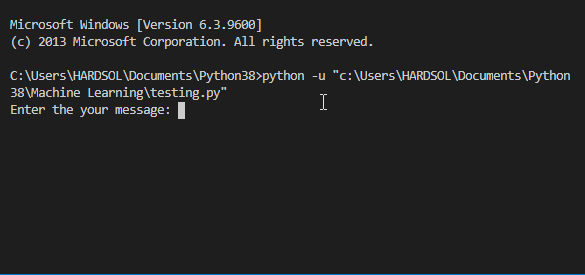How to add time delay in Python?
Last Updated :
07 Apr, 2023
In this article, we are going to discuss how to add delay in Python.
How to add Time Delay?
- In order to add time delay in our program code, we use the sleep() function from the time module. This is the in-built module in Python we don’t need to install externally.
- Time delay means we are adding delay during the execution time in our program code. It should be between two statements or between any part of the program code according to you.
Method 1: Using time.sleep() function
Approach:
- Import the time module
- For adding time delay during execution we use the sleep() function between the two statements between which we want the delay. In the sleep() function passing the parameter as an integer or float value.
- Run the program.
- Notice the delay in the execution time.
What is the Syntax of time.sleep
time.sleep(value)
To understand the topic perfectly. Let’s see the implementation by taking some examples.
Note: As an output, I have shown the GIF, so that you can notice the time delay in the program code during the execution time.
Example 1: Printing the numbers by adding a time delay.
Python3
import time
for i in range(0,5):
print(i)
time.sleep(2)
|
Output:

Example 2: Dramatic printing using sleep() for every character.
Python3
import time
def message(string):
for i in string:
print(i, end="")
time.sleep(0.5)
if __name__ == '__main__':
msg = "Its looks like auto typing"
message(msg)
|
Output:

Example 3: Printing the pattern by taking range from the user and adding time delay.
Python3
import time
def pattern(n):
for i in range(0, n):
for j in range(0, i+1):
print('*', end=' ')
time.sleep(0.5)
print(' ')
if __name__ == '__main__':
num = 4
print("Printing the pattern")
pattern(num)
|
Output:

Example 4: Multithreading using sleep()
Python3
import time
from threading import Thread
class Geeks(Thread):
def run(self):
for x in range(4):
print("Geeks")
time.sleep(2.2)
class For(Thread):
def run(self):
for x in range(3):
print('For')
time.sleep(2.3)
print("Hello")
g1 = Geeks()
f1 = For()
g1.start()
f1.start()
g1.join()
f1.join()
print("All Done!!")
|
Output:

Method 2: Using threading.Event.wait function
The threading.Event.wait procedure, the thread waits until the set() method execution is not complete. Time can be used in it; if a specific time is set, execution will halt until that time has passed; after that, it will resume while the set() of an event is still active.
What is the Syntax of threading.Event.wait function
threading.Event.wait()
Example:
Python3
from time import sleep
if __name__ == '__main__':
delay = 2
print('Geeks')
sleep(delay)
print('for')
sleep(delay)
print('Geeks')
|
Output:
Geeks
for
Geeks
Method 2: Using threading.Timer class
Actions that need to be scheduled to begin at a specific time are represented by timer objects. These items are scheduled to execute on a different thread that performs the action.
What is the Syntax of threading.Timer function
threading.Timer(interval, function)
Example:
Python3
import threading
def gfg():
print("Computer Science: GeeksforGeeks\n")
timer = threading.Timer(1.0, gfg)
timer.start()
print("Timer")
|
Output:
Timer
Computer Science: GeeksforGeeks
METHOD 4:Using time.monotonic() and time.monotonic_ns() functions:
APPROACH:
The time.monotonic() function returns the value of a monotonic clock, which is not subject to system clock changes. The time.monotonic_ns() function returns the value of the monotonic clock in nanoseconds.
ALGORITHM:
1.Set the value of delay in seconds.
2.Get the current time using time.monotonic() and assign it to start_time.
3.Enter a loop that runs indefinitely.
4.Get the current time again and calculate the elapsed time by subtracting start_time from it.
5.If the elapsed time is greater than or equal to the desired delay, break out of the loop.
6.Print a message indicating that the delay is over.
Python3
import time
start_time = time.monotonic()
delay = 5
while True:
current_time = time.monotonic()
elapsed_time = current_time - start_time
if elapsed_time >= delay:
break
print("Time delay of 5 seconds is over!")
|
Output
Time delay of 5 seconds is over!
The time complexity of this code is O(n) where n is the number of times the loop runs, which depends on the duration of the delay. The auxiliary space is O(1) as it does not require any additional memory.
Like Article
Suggest improvement
Share your thoughts in the comments
Please Login to comment...